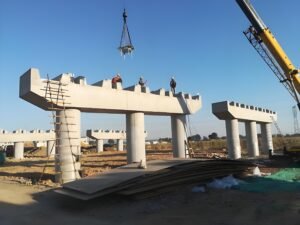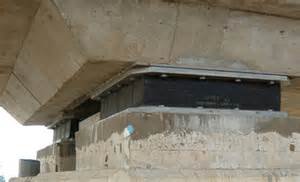Bridge bearings, though often unseen, play a vital role in keeping our bridges safe and functional. This article delves into the different types of bridge bearings, their crucial functions, and the importance of proper maintenance.
The Diverse Cast of Bridge Bearings
Not all bridge bearings are created equal! Different bridge designs and load conditions require specific bearing types.
- Elastomeric Bridge Bearings: These popular choices are made from rubber or neoprene and offer flexibility, allowing for large movements caused by thermal expansion and contraction.
- Steel Bridge Bearings: For situations requiring low friction and longitudinal movement, steel bearings like rocker and roller bearings come into play.
- Pot Bridge Bearings: When high load capacity and rotational flexibility are needed, pot bearings, consisting of a steel cylinder filled with elastomer, are the heavy-hitters.
More Than Just Load Bearers: The Vital Functions of Bridge Bearings
Bridge bearings go beyond simply supporting the weight of the bridge. They perform several critical functions:
- Load Transfer: Bridge bearings act as the bridge between the superstructure (deck) and substructure (piers), efficiently transferring loads from traffic, wind, and the bridge’s own weight.
- Movement Accommodation: Bridges aren’t static structures. Bridge bearings allow for controlled movement due to thermal changes and seismic activity, preventing stress buildup that could damage the bridge.
- Stability Maintenance: By absorbing and distributing these movements, bridge bearings ensure the overall stability of the bridge for safe passage.
Keeping the Guardians in Top Shape: Bridge Bearing Maintenance
Just like any crucial component, bridge bearings require proper maintenance to function optimally and extend the bridge’s lifespan.
- Regular Bridge Bearing Inspections: Trained professionals conduct regular checks to identify wear, damage, or corrosion that might compromise bearing performance.
- Bridge Bearing Cleaning and Lubrication: Maintaining flexibility and reducing friction are key. Bearings are cleaned and lubricated to ensure smooth operation.
- Bridge Bearing Replacement When Necessary: If bearings become damaged or fail to meet performance standards, they are replaced to safeguard the bridge’s integrity.
Advanced Techniques for Bridge Bearing Care
Bridge bearing maintenance has become more sophisticated with the use of advanced technologies:
- Non-destructive Testing for Bridge Bearings: These techniques allow engineers to assess the condition of bearings without causing damage, enabling proactive maintenance.
- Condition Monitoring Systems for Bridge Bearings: These systems continuously monitor the health of bearings, providing real-time data for better maintenance planning.
Conclusion: Bridge Bearings – A Silent Partnership for Safety
Understanding the types, functions, and maintenance of bridge bearings is crucial. By working together, engineers, bridge owners, and maintenance professionals can ensure the longevity and safety of these vital structures. Regular inspections, proper maintenance, and the use of advanced technologies all contribute to keeping the silent guardians of our bridges in top shape, guaranteeing safe passage for generations to come.
Summary
Bridge bearings are the unsung heroes of bridges, silently ensuring their stability and longevity. They come in various types, each suited for specific load conditions, and perform critical functions like load transfer, movement accommodation, and stability maintenance. Regular inspections, cleaning, lubrication, and replacement when necessary are essential for optimal bridge bearing performance. Advanced technologies like non-destructive testing and condition monitoring systems further enhance bridge bearing care.
FAQ
- What are the different types of bridge bearings?
There are three main types: elastomeric (flexible, for large movements), steel (low friction, for longitudinal movement), and pot (high load capacity and rotational flexibility).
- What are the functions of bridge bearings?
Bridge bearings transfer loads, accommodate movement due to temperature and seismic activity, and maintain bridge stability.
- How are bridge bearings maintained?
Regular inspections identify wear and damage. Cleaning and lubrication ensure smooth operation. Bearings are replaced if necessary.
- What are some advanced techniques used in bridge bearing care?
Non-destructive testing assesses bearing condition without damage, and condition monitoring systems provide real-time data for better maintenance planning.



